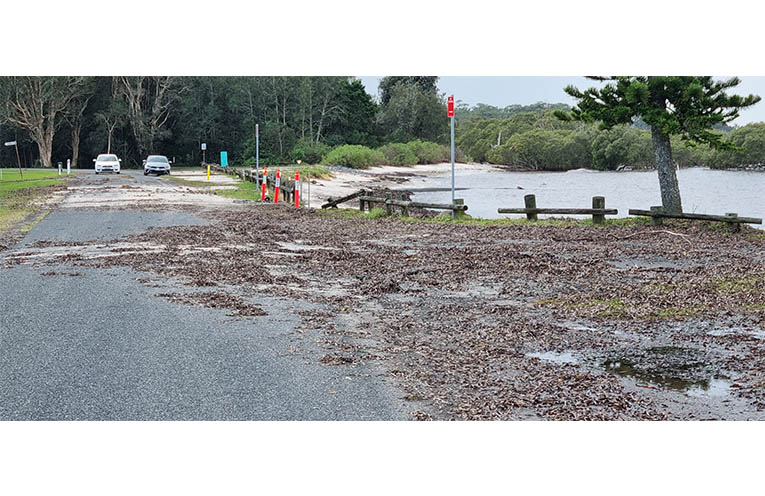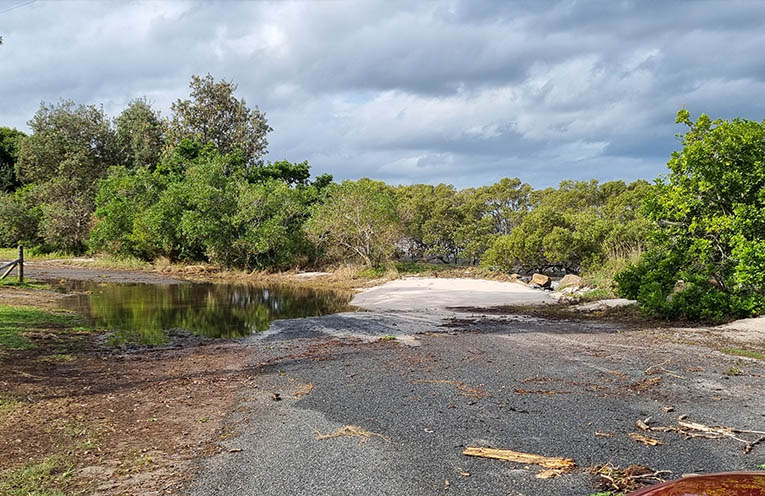KING tides flooded the coastlines and estuaries around Port Stephens from Thursday 29 May, coinciding with the riverine flooding that rocked the hinterland and Mid North Coast.
Masses of seaweed and sand were lifted by the tides over the roads at Pindimar North and South, leaving salty flooding, seaweed and debris in its wake.
This added to the rainwater flooding of properties in South Pindimar.
Several Pindimar locals, out to survey the damage on Friday morning, were deeply concerned about the functionality of drains that are supposed to take tidal flooding back out to the Bay.
On top of this, seaside conditions were also impacted by storm-force winds driven by a low front in the Tasman Sea and a cold front causing potential wave peaks of 10 metres.
The Bureau of Meteorology issued a hazardous surf warning for 2500kms of the NSW coast, from Byron Bay to the Eden Coast.
The real hidden danger, apart from water-covered roadways, was the risk of septic systems leaking into the floodwaters, as happened recently at similarly “unserviced villages” like Nerong.
The condition of local roads also remains a hazard.
“During heavy rainfall or flooding, roads can quickly become hazardous, and roads or crossings that may have looked safe a short time ago can quickly become dangerous,” said a representative of Transport for NSW (TfNSW).
“Roads and the ground beneath them can wash away and this may not be visible from the surface, as floodwater can be deeper than it looks and contain pollutants and other debris.
“It can trap your car and put you and your passengers at risk.”
The riverfront at Tea Gardens suffered similarly, with the king tide washing over the seawall and making its way a block inland to Myall Street.
It then joined rain-flooded low points, where already poor drainage has been exacerbated by recent development block fill-ins.
The king tides and recent rain are also highlighting and accelerating the Tea Gardens riverfront’s biggest problem; large sinkholes that are forming along the seawall pedestrian area.
Historical analysis indicates that the entire Tea Gardens seawall, from Coupland Avenue to ANZAC Park, was built without mortar around 100 years ago.
By Thomas O’KEEFE





